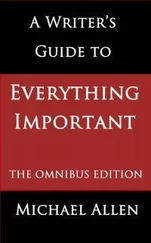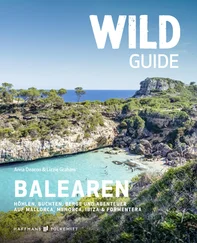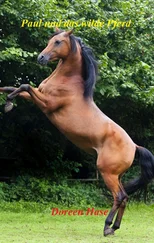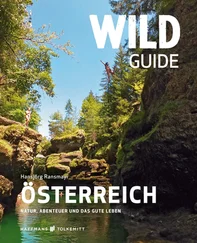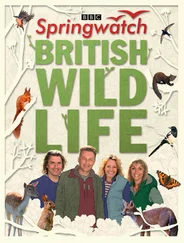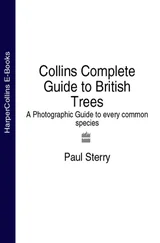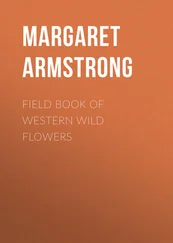1 ...6 7 8 10 11 12 ...28 The encroachment of vegetation into areas of open water leads to the creation of habitats know as mires, which are more popularly referred to in a general context as marshes. Marshes often form on neutral soils, but where they are base-rich (alkaline) then the resultant habitat is called a fen . Conversely, acid soils encourage the formation of bogs . The nature of the underlying soil has a profound influence not only on the appearance of the mire in question but also on the plant species that grow there. Some wetland plants, such as Bogbean, will grow in both moderately acid and mildly alkaline conditions while others are more selective. Thus, for example, we find that certain plants, such as cotton-grasses, sundews and butterworts, are essentially restricted to acid soils while fens are home to a range of interesting sedges, plus more showy plants including Great Meadow-rue, Marsh Valerian, Marsh Pea and Greater Water-parsnip.
In habitat terms the coastline is arguably Great Britain’s crowning glory. Although development has marred some areas, particularly in southern England, those that remain unspoilt there, and elsewhere in Britain and Ireland, are truly wonderful and harbour a rich array of specialised plants.
For breathtaking scenery and a sense of untamed nature, coastal cliffs offer unrivalled opportunities for the naturalist. Botanical highlights include carpets of Thrift that dominate the vegetation in many western parts of the region, with species such as Sea Carrot, Sea Campion and various sea-spurreys in attendance.
To the unenlightened eye, an estuary may seem like a vast expanse of mudflats, studded with a mosaic of bedraggled-looking vegetation and very little else. For the botanist, however, nothing could be further from the truth. Specialised plants including glassworts, sea-lavenders and Sea Purslane have evolved to cope with twice-daily inundation by sea water. Above the high tideline, intriguing salt-tolerant species thrive.
Portland Spurge is just one of the delights to greet visiting botanists on a spring trip to the extensive dune system of Braunton Burrows in Devon.
Sandy shores are beloved of holidaymakers but have much to offer the botanist too. On the landward side of the beach, colonising plants – notably Marram Grass – establish stable dune systems and subsequently these are colonised by maritime plants such as Sea Spurge as well as grassland species such as Viper’s-bugloss and Common Bird’s-foot-trefoil. Coastal shingle is a more challenging environment for a plant and it tends to be the domain of hardy specialists such as Sea-holly, Yellow Horned-poppy and Sea-kale.
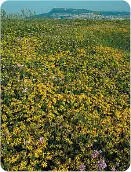
In botanical terms, the stabilised shingle at Chesil Beach in Dorset is arguably the finest of its kind in Europe. Here, extensive carpets of Horseshoe Vetch can be seen, but Bird’s-foot-trefoil and Thrift also thrive in abundance.
WORKING ON THIS PROJECT gave me the opportunity to visit many wonderful botanical locations across our region, the best of which are protected, to a degree, by nature reserve status and hence are still in good order. I also revisited many unprotected wayside botanical sites that I had not seen for several years. Sadly, most had become botanically impoverished and some had even lost the special plants for which they had been known. It will come as no surprise to learn that the majority of these sites were on areas of farmland.
Threats to the countryside are all too obvious these days: the swallowing of land for housing, road schemes and the like, industrial and domestic pollution, and above all changes in agricultural practices – namely the unquestioning use of ever-more ‘efficient’ herbicides since the 1950s. And problems for wild flowers in the countryside do not stop with farming. Many landowners view the land they own as something to be exploited, if not for economic gain then as a playground, without a thought for conservation.
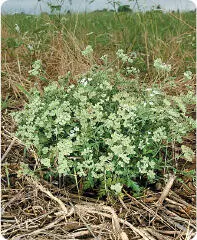
It has come to something when the discovery of Spreading Hedge-parsley, once a widespread arable ‘weed’, is a cause for botanical celebration. Without changes in agricultural practices, species such as this – already extinct at a local level in many areas – could disappear from Britain completely.
Legislation and agricultural grants relating to the way the countryside is managed need to target wildlife more intelligently than is currently the case, and development and change of land use should be subject to as much restriction as exists in the world of town planning. Easy to say, but much harder to put into practice. And there seems little cause for optimism, given that statutory bodies commanded with the responsibility for nature conservation are funded by government, itself perceived as being more receptive to economic than to environmental lobbies.
Object to, and oppose, all major development in the countryside and support organisations that are critical of the way intensive farming and insidious urbanisation have changed the botanical face of the landscape. On a small scale, grow as much of your own food as you can, garden organically, and use local organic sources for your additional needs whenever possible. Another way that the individual can help safeguard the British countryside is to donate as much money as possible to conservation organisations for the purchase of land to remove it from the threat of intensive farming or development. Suitable recipients of donations would include organisations such as Plantlife International, the various county Wildlife Trusts, the Woodland Trust, the National Trust and the RSPB.
Although walks in the countryside sometimes induce a sense of gloomy pessimism, budding botanists should not despair. Remarkably few flowering plant species have been lost entirely from Britain and Ireland in the last century and there are still plenty of wonderful botanically rich locations around the country. Nature reserves are thriving and, with your support and enthusiasm, things can only get better.
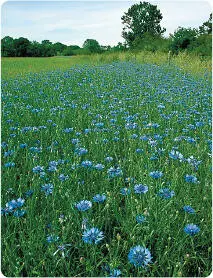
Thankfully, it is still possible to find agricultural fields where Cornflowers and other arable weeds thrive alongside the desired crop plant, either by design or where non-intensive farming methods are used. Let us hope that sights such as this become more commonplace as enlightenment, or financial inducements, change the way some of the land is farmed.
Juniper to Nettle Families
Juniper
Juniper Juniperus communis (Cupressaceae)  HEIGHTto 5m (sometimes prostrate)
HEIGHTto 5m (sometimes prostrate)
Dense shrub of well-drained soils, from chalk downland to mountains. FLOWERSOn separate-sex plants; those on female plants are green and oval (much of year). FRUITSRipening in second year to form blue-black berry-like cones . LEAVESStiff, bluish green, needle-like , in whorls of 3. STATUSWidespread and locally common.
Читать дальше
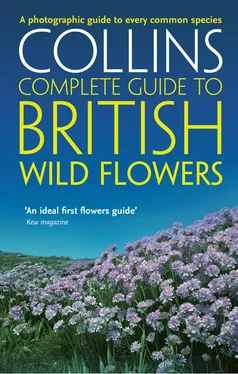



 HEIGHTto 5m (sometimes prostrate)
HEIGHTto 5m (sometimes prostrate)